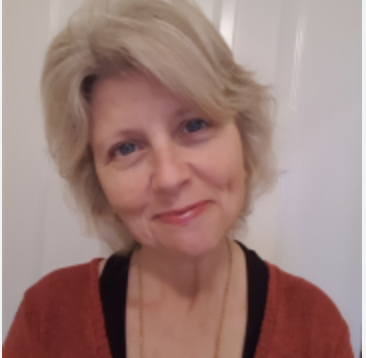The classics: RRSPs and TFSAs

Registered retirement savings plans (RRSPs) and tax-free savings accounts (TFSAs) are popular for a reason: They work.
Both account types help shelter interest or investment gains from tax. And, both the RRSP and TFSA have annual contribution limits to which account holders must adhere.
“You want to take advantage of the power of time and compound interest,” says Chris Karram, managing partner at SafeBridge Private Wealth in Toronto. “The impacts on your future are wild.”
Both RRSPs and TFSAs can be used to hold a variety of investment vehicles. Once your money hits a particular account, Karram says, it can be used to purchase various equities, such as stocks, mutual funds or bonds. RRSPs can also hold more adventurous investments, like lending on private mortgages, other revenue-generating real estate opportunities and corporate debt.
It’s also not an A versus B choice. Karram says most of his clients take a hybrid approach after weighing each product’s tax benefits and considering their individual retirement timelines.
RRSPs, as the name suggests, are designed to fund people’s retirements and are more difficult to withdraw from if you have a short-term financial need. TFSAs, by contrast, offer more flexible withdrawal options if you need some money back fast.
“I think that’s the most important piece of any conversation,” he says. “One year versus 15 years is a huge difference. One year versus five is a huge difference.”
Grow Your Savings Effortlessly with Moka
Automate your savings with every purchase and watch your money multiply. Moka rounds up your transactions and invests the spare change. Start building wealth effortlessly today. Join thousands of Canadians embracing financial freedom with Moka
Sign up nowAn easy way to diversify: balanced ETFs

Single-ticket exchange traded funds (ETFs) can be a relatively simple way to diversify.
Retirement isn’t something to gamble on. Diversifying your portfolio can create a solid hedge against the riskier assets it contains, while providing dependable returns.
One simple way to diversify is to invest in an exchange-traded fund, or ETF.
“If you’re going to be a do-it-yourselfer, there are plenty of single-ticket ETF portfolios,” says Jason Pereira, partner and senior financial consultant at Woodgate Financial in Toronto. “You buy one fund and it gives you a balanced portfolio that’s at different risk levels.”
A single-ticket, or balanced, ETF provides a combination of both equity and fixed-income investments, allowing you to profit from gains in both the stock and bond markets.
ETFs may not provide explosive short-term payouts like meme stocks, or have the allure of cryptocurrency, but they also aren’t exposed to the kind of feast-or-famine unpredictability associated with more hyped investments.
Choosing the right balanced ETFs out of the almost 900 available in Canada isn’t an easy decision, though. If you’re committed to going the DIY route at this stage of your retirement planning — and you probably shouldn’t be; more on that later — Pereira says the robo-advisor option can simplify the process.
Multi-family, commercial and industrial real estate

Investing in real estate that produces income through rents can be done directly, or by using real estate investment trusts (REITs).
Surging home prices have made retirement a much more comfortable proposition for owners of residential properties in Canada. With the market boiling over, putting 20% down on a rental property and becoming a part-time landlord may seem like a no-brainer.
Factoring in long-term appreciation, it certainly could be. But if you’re hoping to generate monthly income from a home you purchased at the peak of the market, keep in mind that rents in Canada are not on the same face-melting upward trajectory as the properties that can generate them.
Just because home values have exploded doesn’t mean renters suddenly have the ability to pay an additional $300 in rent every month just to help you pay your mortgage.
That’s why David Christianson, senior investment advisor at Christianson Wealth Advisors in Winnipeg, Man., says now is a good time to investigate other real estate opportunities, particularly multi-family, industrial and commercial properties.
Multi-family will remain attractive so long as renters cannot afford homeownership. Plus, industrial, shipping logistics and warehouse spaces are benefiting from the tremendous — potentially permanent — boost that online retail received during the pandemic.
And, because of the instability of this past year, commercial assets like retail and office properties could be found and purchased at a discount.
“When there’s uncertainty, you can usually get a better price on things,” Christianson says.
Rather than purchasing actual properties, Christianson says an easier path to returns can be found by buying shares in a real estate investment trust, or REIT.
“It’s the most practical way for people to invest because you can invest a small amount and diversify that way,” he says, adding another option is purchasing shares in ETFs that track the performance of the major REITs on the Toronto Stock Exchange.
Unexpected vet bills don’t have to break the bank
Life with pets is unpredictable, but there are ways to prepare for the unexpected.
Fetch Insurance offers coverage for treatment of accidents, illnesses, prescriptions drugs, emergency care and more.
Plus, their optional wellness plan covers things like routine vet trips, grooming and training costs, if you want to give your pet the all-star treatment while you protect your bank account.
Get A QuoteInsurance

Karram is a proponent of using life insurance as an additional means of planning for retirement. Designed the right way, insurance can be deployed in much the same way as a TFSA.
Owning a cash-value life insurance policy can help you fund a variety of additional investments while growing the cash value inside your policy — without incurring taxes on that growth.
These are permanent insurance policies, different from term policies, which are only good for a specific period of years and generally designed to protect policyholders’ families from a sudden loss of income if a policyholder dies.
Your money grows tax-free inside a cash-value policy and can be accessed tax-free for retirement-income purposes. The contribution limit is more generous than with a TFSA; and you can use either personal dollars or funds held inside a corporation, which can make it an intriguing option for high net-worth individuals and business owners.
“You get a little more flexibility in how you fund your account, but you get very similar benefits as with a TFSA,” Karram says.
Emergency and dream funds

Even your emergency fund can be invested — provided you keep it in an account that ensures easy access should you need the cash.
While not an investment strategy per se, Christianson urges Canadians sitting on pandemic savings to begin building two separate funds: an emergency fund and a dream fund.
The former involves setting aside a sum equal to two- or three-months’ worth of net expenses in the event of sudden financial need. Doing this will ensure you won’t eat into your retirement savings to pay for car repairs, a new roof or other unforeseen expenses.
Christianson says emergency funds should be placed in a vehicle that “doesn’t fluctuate in value and is liquid,” like a savings account or 30-day term deposit. An unused line of credit can also be an option for people with the discipline not to tap it for things they want but don’t absolutely need.
A dream fund is a little more fun. This is where you start saving for once-in-a-lifetime vacations or major “I-earned-this” purchases. Because your dream fund won’t typically be needed for several years, Christianson says you can be a little more aggressive in how you fund it.
“If you’ve got five years, an ETF or equity mutual fund or some individual stocks could be used,” he says. “If your time horizon is three years, then maybe it’s more of a blend of equity-type investments and fixed income.”
Don’t start building without a blueprint

Before deciding on how you'll invest your money, think about what you'll need your money to do for you after you retire.
Pereira reminds Canadians that, despite how easy and exciting the TV financial networks make investing seem, there is no shortcut to a well-funded retirement.
“I will say this over and over again: Go get advice. Do not just try to find solutions,” he says. “When you do that, you’re looking for the components of building something, but you don’t even have a blueprint of how you’re going to build that thing. That’s the fatal flaw.”
Retirement is more than just a period of your life where you stop generating income, Pereira insists. Rather than focusing solely on dollars and cents, he says retirement planning should be holistic and reflect the kind of life you want to have once you retire.
“It’s the old Yogi Berra saying: ‘If you don’t know where you’re going, you’re going to end up somewhere else,’” he says.
As simple as some of these solutions appear, investing in any one of them won’t answer the fundamental questions that need to be addressed when it comes to your retirement: What account types should you be using? How much capital are you going to put into each one? What kinds of investments are you then going to be purchasing?
“The right approach is, ‘Given my situation, where should I be placing my investments? How much risk am I able, and how much risk am I willing, to take?’” Christianson says. “Only then do you start looking at the individual vehicles. Most people do it the other way around.”
Sponsored
Trade Smarter, Today
With CIBC Investor's Edge, kick-start your portfolio with 100 free trades and up to $4,500 cash back.








